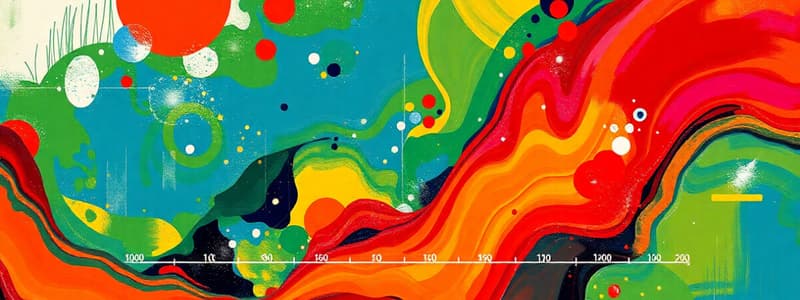Podcast
Questions and Answers
At which point does the substance transition from solid to liquid?
At which point does the substance transition from solid to liquid?
- Point a
- Point c
- Point d
- Point b (correct)
What does point c on the diagram represent?
What does point c on the diagram represent?
- The melting point of the substance
- The boiling point of the substance (correct)
- The point where the substance is entirely solid
- The transition from solid to liquid
During which phase is the substance both solid and liquid?
During which phase is the substance both solid and liquid?
- At point a only
- At point c only
- At point b only (correct)
- Between points b and c
What is indicated by the y-axis in the state changes diagram?
What is indicated by the y-axis in the state changes diagram?
What happens to the temperature as the substance transitions from liquid to gas?
What happens to the temperature as the substance transitions from liquid to gas?
Flashcards are hidden until you start studying
Study Notes
State Changes Diagram
- The state changes of a substance can be visually represented using a diagram
- The x-axis of the diagram represents time, and the y-axis represents temperature.
- The states of matter are represented as follows:
- Solid: The substance is in a solid state at point a.
- Liquid: The substance is in a liquid state between point b and point c.
- Gas: The substance is in a gaseous state at point c.
- Melting Point: Point b represents the melting point, where the solid and liquid states coexist.
- Boiling Point: Point c represents the boiling point, where the liquid and gas states coexist.
Studying That Suits You
Use AI to generate personalized quizzes and flashcards to suit your learning preferences.




